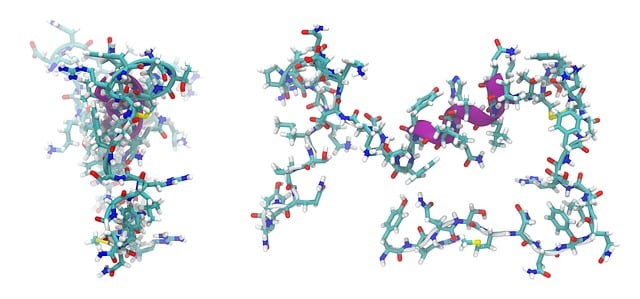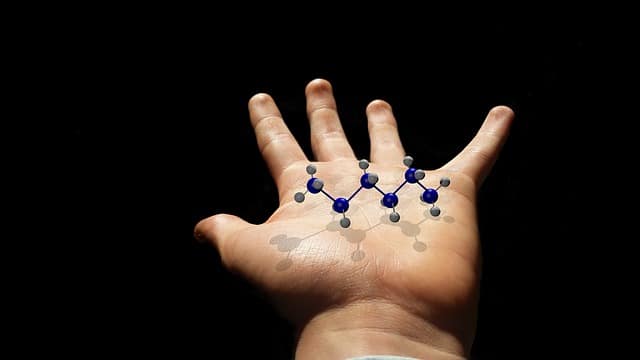
A peptide bond is a chemical bond formed by a carboxyl group of one amino acid and an amino group of another amino acid.
The term link has several uses: in this case we are interested in referring to its meaning as a union or a link between different elements. Peptide , for its part, is that related to peptides : the molecules that are formed through a covalent union of amino acids (organic substances whose molecular composition has a carboxyl group and an amino group).
The chemical bond established between the carboxyl group of one amino acid and the amino group of another amino acid is called a peptide bond . This type of bond, where a water molecule is lost , allows the formation of the aforementioned peptides and proteins .
When an amino group ( -NH2 ) and a carboxyl group ( -COOH ) join with the loss of a water molecule, a CO-NH bond is established. The development of this link always requires the contribution of energy ; In turn, when the peptide bond is broken, energy is released.
cleavage of a peptide bond
The breaking of a peptide bond can occur through hydrolysis : this is the name given to the splitting that occurs in a molecule through water. Hydrolysis, in the natural environment, occurs very slowly, although it is possible to speed up the process using various techniques .
In the presence of water, a peptide bond can be broken with an amount of free energy that is around 8-16 kilojoules/mol (which is equivalent to 2-4 kcal/mol). The unit kilojoule per mole , which can be symbolized as kJ/mol , is recognized by the International System of Units ( SI ) and corresponds to the relationship between energy and the amount of matter : energy is expressed in kilojoules and matter is measured in moles.
Kilojoules are nothing more than thousands of joules , another unit of measurement recognized by the International System, whose original name is joule and is used for the measurement of heat, work and energy. In technical terms, its definition is "the amount of work carried out by one newton with a constant force along one meter in the direction of said force." The unit mol , on the other hand, is used to measure the quantity of a given substance, and is part of the seven fundamental physical quantities of the SI .

Peptide bonds make it possible for proteins and peptides to form.
Acceleration of hydrolysis
To accelerate the hydrolysis of a peptide bond, which in nature can take more than a millennium, scientists can choose one of the following methods :
* acid hydrolysis : it is achieved by leaving the protein boiling for a long time with strong acid type solutions (H2SO4 and HCl). This pathway achieves the complete destruction of tryptophan and part of the threonine and serine;
* basic hydrolysis : it is usually carried out using BaOH or NaOH, and does not destroy the amino acids mentioned in the previous method;
* enzymatic hydrolysis : in living beings, this way of degrading peptide bonds is the most normal. In this case, proteolytic enzymes come into action that act slowly and often do not complete their work, although the destruction of amino acids or racemization (when an optically active compound becomes racemic) does not occur either. This type of hydrolysis is very specific;
* hydrolysis by temperature : if conditions are normal, the peptide bonds are not destroyed, but the protein can be denatured (that is, its secondary, tertiary and quaternary structures are broken). On the other hand, if a temperature higher than 110° is applied for 48 hours, it is possible to destroy the bonds.
Representation of a peptide bond
It should be noted that, generally, the peptide bond is represented as a single bond . In any case, it has various characteristics that bring it closer to a double bond.
That is why specialists usually mention that a peptide bond has properties that place it halfway between a single bond and a double bond.
